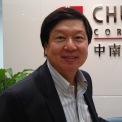
- Succession of the second generation (1): Expanding European-US Market and inviting talents
Knowing that Chung Nam needed successors, Chong Hok Hoi decided to join the family business upon graduation. Initially, he was involved in sales and marketing, accompanying sales colleagues on regular trips to Southeast Asia, Middle East, Europe and U.S.A. As Chung Nam had already built a good reputation in the industry in the 1960s, Chong Hok Hoi felt he wouldn’t face much difficulty if he agreed to succeed the business. In the early 1980s, the company’s business took off and both workforce and production volume constantly increased over the years. In the beginning, Chong Ching Um spent more time developing Southeast Asian markets. As there were language and communication barriers, he remained reliant on intermediaries to explore European and U.S. orders. After Chong Hok Hoi and his elder brother, Chong Hok Shan, took over the business in the late 1970s, they were able to deal directly with European and U.S. clients as both had studied overseas and spoke fluent English. Recalling changes in communication modes, Chong Hok Hoi said Chung Nam had used different channels such as telexes, IDD telephone calls, faxes and e-mail.
When Chong Hok Hoi first joined the company, Chung Nam was a typical family business. There were many senior staff including a factory head manager who had been with the company for 62 years, and all shareholders were family members. In his role as founding president of the Chiu On Association, Chong Ching Um always helped his folks with employment opportunities. Before being wholly succeeded by the second generation, all company employees were Chinese. In the early days, people engaged in the watch industry came from different hometowns and quite a number of them were from Shanghai. After the war, Cantonese and Chaozhou people began to join them. After the Chong brothers took over Chung Nam, the company start to recruit talent from overseas to supplement its old staff in coping with expansion. The introduction of private equity funds in the 1990s saw the setting up of more joint ventures and the recruitment of non-family members as shareholders.

- Succession of the second generation (2): developing OEM business and buying brands' licences
During the company’s early years, Chung Nam products such as Octo and Tugaris watches were mainly for export, mostly to Southeast Asian markets. In the 1960s, the company began to move into OEM manufacture for foreign companies. After Chong Hok Hoi’s elder brother, Chong Hok Shan, joined the company, Chung Nam began to develop the Middle East, Europe and U.S. markets. At the beginning, Chung Nam exported low-end products to the U.S.A. After Chong Hok Hoi joined the company in 1979, it began focusing on expanding the brand business in the U.S. Although the OEM business initially accounted for a small proportion of Chung Nam’s business, its share later reached 80%. Early on, some clients were handled through intermediaries, but eventually all became direct Chung Nam clients. In the 1980s, the company began creating own brand timepieces which were not as long-lasting as its Octo watches. As the market performance was unsatisfactory, the lines were discontinued within a few years. The following decade saw Chung Nam purchase licences to begin manufacturing and marketing foreign designer brands such as Germany’s Caterpillar from within Hong Kong. Asked to sum up the company’s past operation, Chong Hok Hoi stressed that OEM and acquisition of brand licences were just two of the many business models that Chung Nam was involved in.
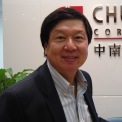
- Focusing on mainland market in the recent years
Currently, Chung Nam’s major market was mainland China where it had over 300 outlets. Chong Hok Hoi said that the initial development of retailing on the mainland was tough. Key problems included stiff competition from Swiss brands and the difficulty in finding reliable wholesalers and distributors. In those days, Hong Kong mainly supplied mass-produced, mid- to low-priced watches to domestic and overseas markets. Given China’s steadily increasing per capita income and consumption levels over the previous few years, Chung Nam began to market mid-priced traditional brands such as popular Swiss watches there. The company began producing watch bands in the 1930s and later moved into the import of watches for distribution in Hong Kong and Southeast Asia. In reviewing Chung Nam’s development, Chong Hok Hoi believed that capital had never been as important as the key people who oversaw the company’s production and retailing functions. Today, manufacturing outstripped retailing, accounting for around 70-80% of Chung Nam’s business.
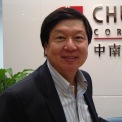
- Changes of sales mode: street marketing, TV commercial and products expos
Hong Kong was Chung Nam’s major market during its early years. In the 1950s, the company hired salesmen to carry out street marketing after training by Chong Ching Um. In those days, retail shops first had to buy watches on credit. While the retailers could not return the less popular models, they could negotiate price reductions with Chung Nam. When Chong Hok Hoi was at school during the 1960s, he often took summer jobs with the family business. Carrying a leather case weighing 20-30lbs, he accompanied company salesmen to shops all over Hong Kong. Offering him an excellent opportunity to observe and learn how to communicate with customers, the work gave Chong Hok Hoi a valuable lesson about sales work. All watches promoted through street marketing were Chung Nam-exclusive agency brands, mostly Octo and Tugaris watches. Roamer timepieces were not introduced until the 1990s. Following the U.S. moon landing in 1969, the demand for Octo Space Master watches was so impressive that the supplies were rationed to retail shops. Chong Hok Hoi recognized the importance of close wholesaler-retailer ties. He believed that customer relationships could be built up through social activities such as offering cigarettes, discussing horse racing tips, having tea together and even sponsoring travel trips for retail shop owners and their staff. By this time, Chung Nam had also begun placing advertisements on tram, magazine, cinema, radio and TV, and even hired artist George Lam to star in its TV commercials. Chong Hok Hoi still remembered the classic Octo advertising script: "No later, no sooner! With an Octo watch, time is just right!.
As Chong Ching Um was a director of the Chinese Manufacturers' Association of Hong Kong (CMA), Chung Nam had participated in the Hong Kong Products Expo. Chong Hok Hoi did not involve a lot in the preparation for the products expos but he thought that these activities were less important than the watch and clock fairs. Local watch and clock makers had not been allowed to exhibit at overseas exhibitions for many years. To address the issue, some 10 directors of the Hong Kong Watch Manufacturers Association (HKWMA) agreed to promote their products to overseas buyers by staging their own Hong Kong Watch and Clock Fair (HKWCF). The inaugural 1982 event took place in rented rooms at the Miramar Hotel which was paid by association directors from their own pockets. Chong Hok Hoi was involved in the preparation of this first HKWCF at which Chung Nam displayed a range of finished watches, watch bands and watch cases. So well received were these early HKWCF events by overseas buyers that the Hong Kong Trade Development Council joined forces with HKWMA and began to co-organize future exhibitions. There was a huge surge in global demand for low-priced watches from Hong Kong in the 1980s. Chung Nam’s major clients at this time included top U.S. department chain shops such as Kmart and Wal-Mart.
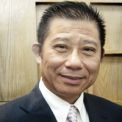
- Engaging in sales business in North America and Mainland China
Leung Wai Ho’s failure to make a mark with North American watch buyers. With the issue of the UK’s 1997 handover of Hong Kong to China still to be resolved, 1983 was a year of political instability for the Territory. Leung Wai Ho’s family emigrated to Montreal in Canada in 1984. As Montreal was close to New York, it was a convenient base from which to contact Dailywin’s US customers. The fact that the city was located in Canada’s French-speaking zone also helped Leung Wai Ho’s children learn French. Leung Wai Ho bought the SAGA brand in Canada and given it a Chinese name. From 1986, he focused on promoting the brand’s sales in Canada. As he could not oversee the business on the spot and North America’s vast population and landmass made advertising and marketing very expensive, the venture eventually came to an end. Leung Wai Ho retained his faith that Hong Kong was the ideal place for developing a retail business. Learning from his failure in North America, Dailywin began expanding its retail operations in mainland China with effect from 1992 onwards.
Developing China retailing on a consignment basis. In 1992, Leung Wai Ho accompanied a party from the Hong Kong Trade Development Council to the mainland to promote retailing. While there, he secured sales space in Guangzhou’s Nan Fang Building which had roughly the same status as Hong Kong’s Shui Hing and Sincere department stores. Leung Wai Ho subsequently rented a shop in Guangzhou’s Shangxiajiu Road, opening a flagship store to promote SAGA watches. Having many years of production and sales experience, believing there was a huge potential market in China, and serving as Vice President of the CHA, Leung Wai Ho had every confidence he would be successful in applying for his sales quotas. As a result, he worked hard to promote his mainland retailing activities.
Dailywin’s 1995 listing on the London stock market. Dailywin spent a full year trying to raise funds to develop its domestic sales in China and listed itself on the London Stock Exchange in 1995. It subsequently used all funds raised to expand the Dongguan factory operation. In those days, the UK market had a lower listing threshold, while the Hong Kong Stock Exchange did not welcome small companies capable of earning less than $50,000,000 within three years.
Dailywin began mainland retailing. Dailywin’s China domestic sales team began by focusing on consignments to shopping malls with all selling conducted through wholesalers. As Leung Wai Ho was not familiar with the mainland market and lacked experience in retailing, wholesalers often took the goods and defaulted on payment. This cost him considerably in terms of both goods and money. Between 1994 and the end of 1996, Leung Wai Ho lost a total of $50,000,000 in this way. After this failure, Dailywin was listed in Hong Kong in 1997 to raise funds for a comeback. From 1997 onwards, Leung Wai Ho directly managed the company’s mainland retail stores, using a “shop-in-shop” mode to open 25 shops in big cities across China. Leung Wai Ho was well aware that as a manufacturer he lacked retailing experience, and therefore hired full-time sales managers to run the shops. One of the managers he employed had previously worked in Giordano. Leung Wai Ho rented spaces of 20 to 40 square metres in each large shopping mall. He also co-operated with foreign brands such as Timex, Casio, Disney, Elle and Esprit to market lifestyle watch brands. Labelled Time Zones, these retail corners collected and analysed sales information on a daily basis. Leung Wai Ho admitted that the Guangzhou flagship store was not suitable for selling brand watches and that he had chosen the wrong location.
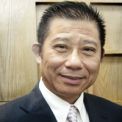
- Quitting the retail market. Difficulties of building successful own brands
Leung Wai Ho quit the China retail market. Leung Wai Ho claimed that his attempt to enter retailing was a “money burning” business that had cost him around $200 million between 1997 and 2003. Sadly, profits earned from overseas’ businesses were insufficient for him to “burn money” in China at such rates. In 2003, Dailywin’s retail stores in China hit a peak of 450, with goods on display having a total value of over $90 million and some 2,000 staff running shop operations and warehousing. Not knowing when returns would materialise and lacking the financial muscle to sustain heavy losses for much longer, Leung Wai Ho finally sold the retail business in 2003. The buyer was a large locally listed watch manufacturer called Peacemark.The difficulty of building successful own brands. Leung Wai Ho bought into the idea of creating Dailywin’s own brand, agreeing that retail profits were much higher than manufacturing equivalents. However, only producers who lived within their financial means could hope to succeed in such a market. At this time, Leung Wai Ho is no longer willing to take risks as he grew content with earning smaller profits. He continued to believe that brand building is a long-term enterprise involving huge investment capital and with returns only likely to come some 50-60 years later. As success required some understanding of retailing, a novice’s chances of success are ultimately not high. Leung Wai Ho cited Baleno and Jeanswest as enterprises which had successfully developed retail arms. In recent years, Dailywin sold its retail business to Peacemark. Apart from keeping the SAGA brand, the company’s remaining brands’ license and staff were all transferred in this move.
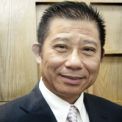
- The origins and setting up of Dailywin
The origins and setting up of Dailywin. Leung Wai Ho thanked his uncle for giving him the opportunity to develop and learn about overseas marketing. When Leung Wai Ho later got married and had his own family to support, he was not content with his remuneration at Leung Lung Kee. Cheered by his customers’ encouragement, he conceived the idea of starting his own business and founded Dailywin in 1978. When he opened his first factory, Leung Wai Ho’s savings only numbered a few tens of thousands of dollars. He borrowed a further $200,000 from friends as capital and rented a 5,000-square foot half-floor plant from Join-In Shirt on Kwai Ting Road in Kwai Chung. He later admitted that the start up was a bold attempt. In the early days, Leung Wai Ho hired relatives as workers. As Dailywin’s customers were willing to pay quickly for their orders and suppliers generously allowed credit payments, business got off to a smooth start.
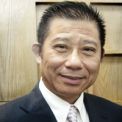
- The expansion of Dailywin in the mid-1980s
Between 1981 and 1982, Dailywin’s business volume constantly increased. Leung Wai Ho worked 12 hours a day in the 1960s and often worked from 8:00 am to 9:00 pm after starting his company. During the day, he looked after the factory operation. At night, he liaised with North American customers via telex. Dailywin initially produced the cases which dictated each watch’s appearance. This work had a high profit margin and most of the company’s customers were in North America. In 1983, a US customer commissioned Leung Wai Ho to assemble complete watches with movements provided by the customer himself. As a result, Dailywin’s business model began moving towards one-stop production. In the late 1970s, Dailywin co-operated with top US watch manufacturer Timex and began producing specialty cases for Timex. The company also looked for other manufacturers, acting as intermediary for referring orders to local watch factories such as Nam Keen and Rainbow. In 1983, Leung Wai Ho eventually bought shares in both of these companies despite their being much larger than Dailywin. The three parties then set up an electroplating factory in 1984 so as to better control quality. The fact that the electroplating factory was located immediately above Dailywin’s plant saved a lot of processing costs.
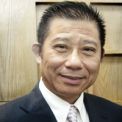
- Engaging in overseas sales business in the late 1980s
With the issue of the UK’s 1997 handover of Hong Kong to China still to be resolved, 1983 was a year of political instability for the Territory. Leung Wai Ho’s family emigrated to Montreal in Canada in 1984. As Montreal was close to New York, it was a convenient base from which to contact Dailywin’s US customers. The fact that the city was located in Canada’s French-speaking zone also helped Leung Wai Ho’s children learn French. Leung Wai Ho bought the SAGA brand in Canada and given it a Chinese name. From 1986, he focused on promoting the brand’s sales in Canada. As he could not oversee the business on the spot and North America’s vast population and landmass made advertising and marketing very expensive, the venture eventually came to an end. Leung Wai Ho retained his faith that Hong Kong was the ideal place for developing a retail business. Learning from his failure in North America, Dailywin began expanding its retail operations in mainland China with effect from 1992 onwards.
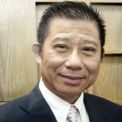
- Background and planning of setting up a factory in China
The 1980s were probably the peak period for Hong Kong industries. Towards the end of the decade, there was a shortage of both local factories and workers. Rapidly increasing labour costs further added to the Territory’s lack of competitiveness. Reforms and the opening up of China meant Hong Kong manufacturers were keen to start investing on the mainland. Local companies had been gradually moving northward in the mid-1980s, mainly concentrating their operations in places like Shenzhen and Dongguan. As many factory managers originally came from the mainland before settling in Hong Kong, most preferred to set up factories in or near their hometowns. As Leung Wai Ho was born in Hong Kong, this was not an issue.
During a study tour to Shenzhen in 1988, Leung Wai Ho and his friends found that many places in and around the area were barren and would need to be self-developed. Leung Wai Ho originally paid the deposit to secure a site in Shenzhen’s Longgang District, finally giving up after he worked out that the cost of continued development would be too high. He later chose a roadside lot in Dongguan, as it would be easier to develop and was near Hong Kong. Local policies in Dongguan also facilitated the setting up of manufacturing facilities and charges there were more reasonable than in Shenzhen. The Longgang District eventually developed satisfactorily and Leung Wai Ho later regretted that he had given up the idea of setting up a factory there.
